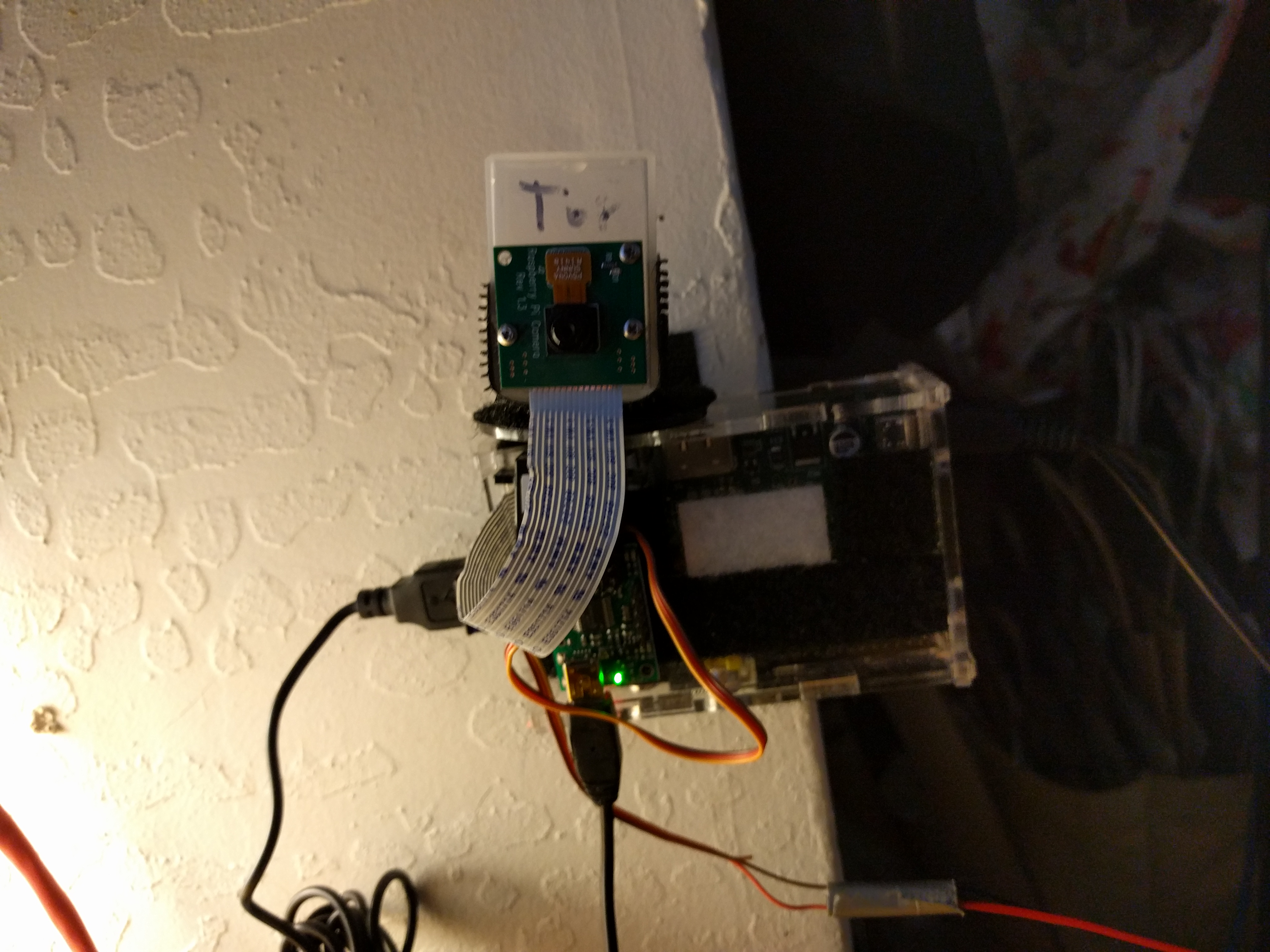
parts
Adafruit Pi Box Enclosure
Raspberry-Pi Model B
Micro Maestro 6-Channel USB servo Controller
Raspberry PI 5MP Camera Board Module
Power HD Micro Servo HD-1600A
wireless usb dongle
4 AA pen batteres and holders
Velcro
notes
===========================
OS/software on Raspberry PI:
===========================
copied rasbian to sddisk:
dd bs=4M if=./raspian.img of=/dev/sdb
boots with hdmi connections to monitor and keyboard attached.
sudo raspi-config:
expanded / partition
added raspberry camera config
rebooted: systemctl reboot
updated o/s:
apt-get update
apt-get upgrade --yes
rebooted: systemctl reboot
added vnc software and desktop environment to use remote screen casting so
I dont need a monitor - run monitorless raspberry pi:
apt-get install xorg lxde-core tightvncserver
test starting/stopping vnc:
tightvncserver :1
tightvncserve -kill 1
Config for starting vncserver:
~/.vnc/xstartup:
lxterminal &
/etc/X11/Xsession -s LXDE &
/etc/rc.local:
su -c'vncserver :1' root
Configure wireless adapter to autoconnect to wifi router:
cat /etc/wpa_supplicant/wpa_supplicant.conf
network={
ssid="gnet24"
psk="*your*pass*phrase*"
}
(note the lack of spaces, adding spaces caused it to not work)
========================
added to my Linux laptop:
========================
apt-get install xtightvncviewer
add to bash: .bashrc:
alias vncviewer='vncviewer 10.0.0.x::5901'
(where x is the ipaddr for the rpi)
vncviewer (to start and connect, after the rpi is boot up)
cd to dir where the code lives (see below) and type:
./photowatch.py
===========
Programming:
===========
2 pieces of code, a bash script to drive the motors, stepper_moto.sh
and a python script, photowatch.py, to drive the photos and post the
pictures to twitter @{yourtwitteraccount} .
software
photowatch (creates pics, upload twitter)
step_moto (drives a stepper moto with some randomness)